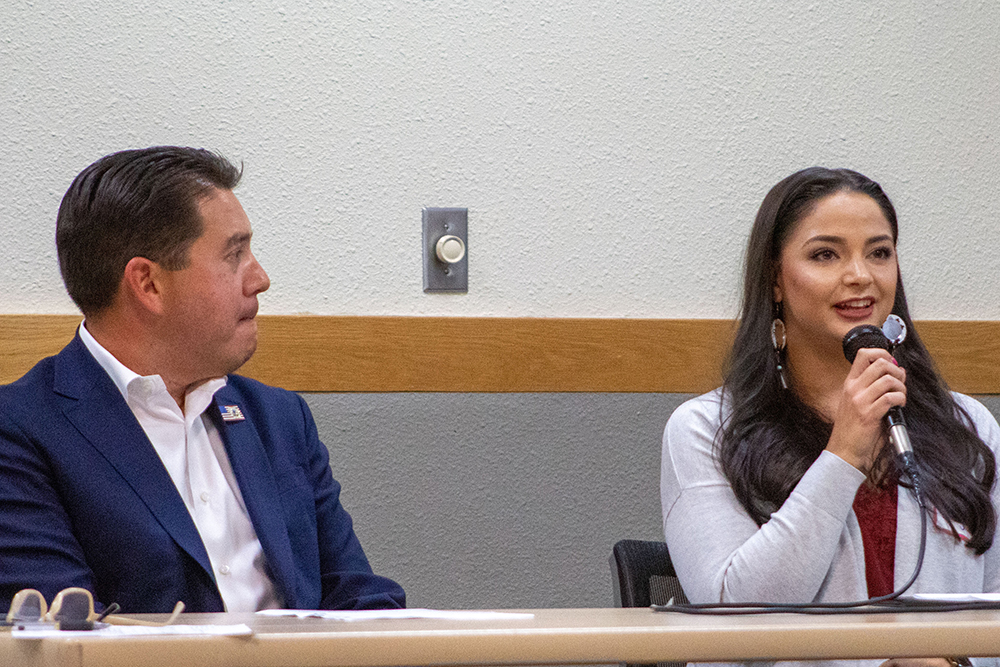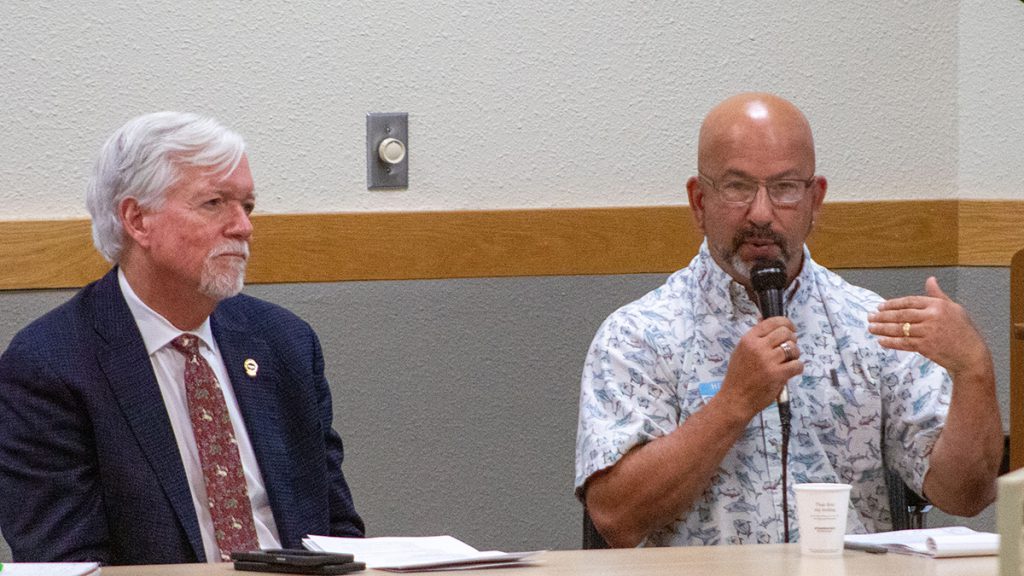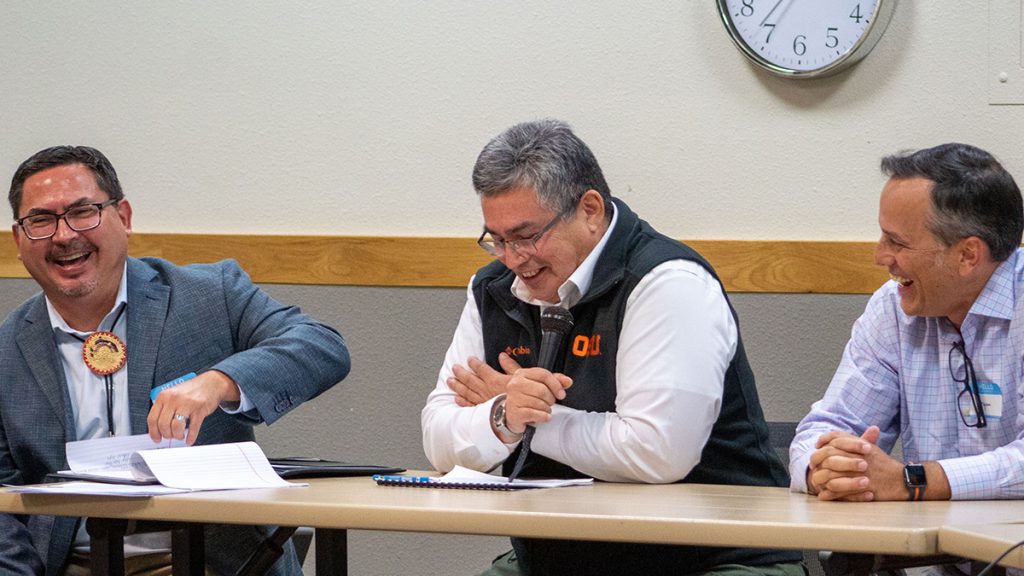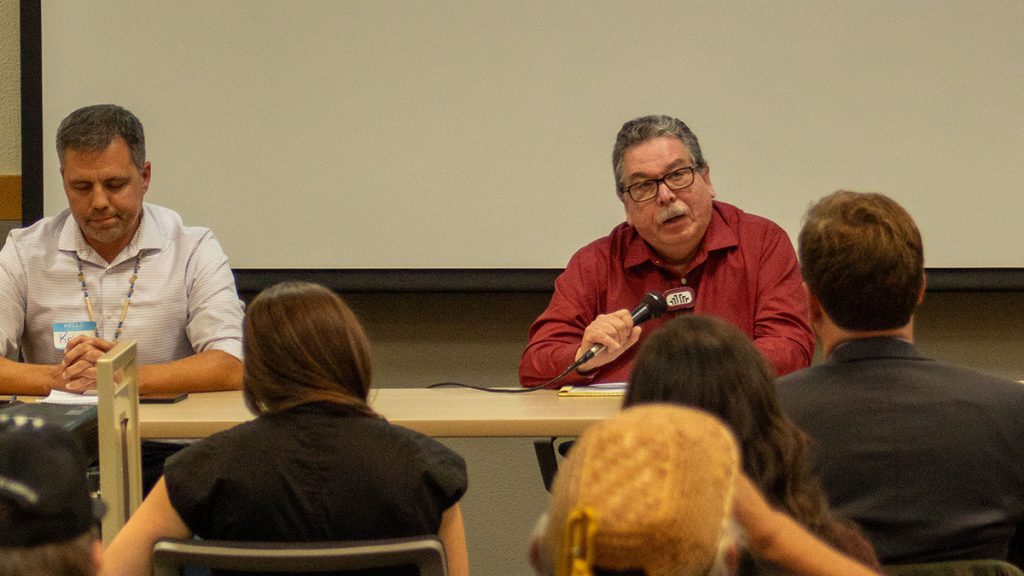
Representatives from federal and state agencies, Tribes, and local governments convened in Tacoma on Tuesday, Oct. 10 for the third annual “Puget Sound Day on the Sound” event. Over the course of several panel discussions, participants spoke about opportunities to better coordinate and align resources to accelerate Puget Sound recovery and support Tribal treaty rights.
Co-hosted by the Puget Sound Partnership and the Northwest Indian Fisheries Commission, Puget Sound Day on the Sound is the “in-state” counterpart to the Puget Sound Day on the Hill event that takes place each spring in Washington, D.C. The ideas discussed “on the Sound” will be carried directly to the halls and conference rooms of D.C. next spring. Likewise, this “in-state” event is an opportunity to check in on what’s happening related to Puget Sound recovery priorities in the nation’s capital.
Sen. Patty Murray, Rep. Derek Kilmer, and Rep. Marilyn Strickland delivered remarks at the event via video. Kilmer and Strickland, co-chairs of the Puget Sound Recovery Caucus, kicked off the event with their remarks. Murray, Kilmer, and Strickland all spoke about the importance of Puget Sound and federal investment in recovery.
“The Puget Sound is a real treasure, and it’s central to Washington state’s economy and our cultural heritage,” said Sen. Patty Murray. “I believe we have an obligation to our kids and grandkids, the Tribes, and everyone who relies on the Sound to restore this rich and complex ecosystem for generations to come.”
“For me, when I think about why Puget Sound is important, I think of my kiddos,” said Rep. Derek Kilmer. “I think of every kid in their generation… It’s a reason these gatherings have continued to grow every year: because we want to protect these treasures – the water, the salmon, the oysters, the orcas, everything – for the next generation, and for the generations after them.”
“As a member of the House Transportation and Infrastructure Committee, I also recognize that there are many infrastructure projects to discuss that have an effect on the Sound,” said Rep. Marilyn Strickland. “In order to keep our Sound safe and healthy for marine ecosystems, we need quality infrastructure, and we must make the investments to help keep it intact. Large scale projects need federal and state partnerships… Protection and restoration are key.”
Transportation Infrastructure and restoration
The first panel, moderated by Ahren Stroming, special assistant for federal affairs at the Puget Sound Partnership, focused on the topic of transportation infrastructure and restoration. Panelists included Roger Millar, secretary of the Washington State Department of Transportation; Ralph Rizzo, division administrator for the Federal Highway Administration’s Washington Division; David Troutt, natural resources director for the Nisqually Indian Tribe; and Col. Kate Sanborn, district commander, U.S. Army Corps of Engineers, Seattle District.
“We need to better align our transportation investments with all of the aspects of Puget Sound—the water, the air, the noise,” said Roger Millar.

“We have responsibilities to make sure national environmental laws are adhered to when the state is implementing projects,” said Ralph Rizzo. “Of course, the Endangered Species Act, Section 7—that’s where 6PPD-quinone comes in—we’re working closely with NMFS and USFWS to figure out how we’re going to keep projects moving while also doing something about capturing the tire dust.”

David Troutt said, “If we apply that same kind of approach to these big capital taxpayer-funded projects across the region, where each one of these projects not only mitigates for their footprint as best as possible (but we know that’s not really possible) but contributes in a meaningful way to raising the ecological bar, then I think we could really make a difference in Puget Sound and in the timeframe that supports the obligations that were committed to in the treaties.”
“A lot of the big remaining restoration work is complex,” said Col. Kate Sanborn. “It’s going to require coordination beyond our normal processes… So, we’re changing our processes. We’re looking at unique ways to do things differently.”
Tribes and treaty rights
The second panel, moderated by Justin Parker, executive director of the Northwest Indian Fisheries Commission, focused on the topic of Tribes and treaty rights. Panelists included Jaime Pinkham, principal deputy assistant secretary of the Army for civil works; Bryan Mercier, Northwest region director for the Bureau of Indian Affairs; Kris Peters, chairman of the Squaxin Island Tribe; and Dave Herrera, fisheries and wildlife policy representative for the Skokomish Indian Tribe.
“Standing side by side, when I was at Mud Mountain Dam, I couldn’t tell who the Tribal biologists were, who were the state biologists, and who were the Corps biologists. That’s co-management,” said Jaime Pinkham.

“If we’re going to live here in this beautiful place – the Puget Sound or the Northwest generally – we’ve got to learn from our Indigenous peoples,” said Bryan Mercier. “There’s thousands of years of knowledge that we can tap into. There’s capacity—Tribes today have greater capacity on much of these efforts than any of our state agencies or federal agencies do – if we tap into it… We’re just now starting to scratch the surface of that knowledge and that capacity, and if we really want to do it well and if we want to do it right, we should lean into it.”
“Go back 15- or 20,000 years ago, when the last ice age [ended] and the glaciers started to recede and the Salish Sea was starting to be formed and these rivers and streams were formed,” said Kris Peters. “Our people walked over the ice bridge and settled right as these waterways were becoming what they are today. We had a relationship with it from day one. They were our highway. They produced salmon and shellfish. They were a way of life for us. It’s not just water to us; it’s spiritual. It’s a connection.”
Dave Herrera said, “Back in the time just before the treaties were negotiated, Europeans were migrating into the area and settling in areas throughout the Northwest. Our ancestors could see what was going on. We had communication with Tribal folks from Puget Sound and eastern Washington and they had communication with the people in Idaho and communication with the people in Montana. They could see what was coming. They were wise enough to recognize that our world was going to be changing forever. It would never be the same. And they recognized that our world had sustained us, fed us, provided us with food, medicine, housing—everything we needed we were able to get from the land… Our ancestors recognized that they wanted to be able to preserve the way of life that we had always had… so in those treaties, they went and included reservation of certain things: fishing, hunting, gathering of natural resources… Those natural resources that they secured for us – that they retained for us – rely on healthy natural habitats to produce those, including the Puget Sound and the landscape around it… If those resources disappear, our identity disappears.”

Putting federal funding to work
The final panel, moderated by Laura (Blackmore) Bradstreet, executive director of the Puget Sound Partnership, focused on the topic of putting federal funding to work. Panelists included Casey Sixkiller, administrator of the U.S. Environmental Protection Agency region 10; Kadi Bizyayeva, councilmember and fisheries manager for the Stillaguamish Tribe; Laura Watson, director of the Washington State Department of Ecology; and Kate Dean, Jefferson County commissioner.
“We have never had this much money before; I don’t think in my lifetime we’ll ever have it again,” said Casey Sixkiller. “So, it really is making sure that we are tackling head on the barriers to getting money out, and lifting up the stories that help to justify the continued historic investment in this program… Don’t take the foot off the pedal.”

“Most of the difficulty we face when it comes to restoration work lies in the prescriptive nature of funding, permitting, and then implementation of recovery projects,” said Kadi Bizyayeva. “We desperately need to figure out how we can ensure more flexibility without sacrificing the accountability in those areas…Clearly defining the expectations for permitting can be so helpful, and making sure that we’re not facing setbacks as we’re moving down because that increases cost and time—and sometimes when you increase time, you lose out on funding. Making sure that Tribes can have some help in making sure that our capacity is lining up with the expectations of the requirements of these funding and permitting pathways is a top priority for us right now.”

“Projects proceed at the speed of trust,” said Laura Watson. “And so if we can have those trusting relationships, build those and maintain them throughout, when it comes time to do the scramble for the federal money then we’re just that much more competitive.”
“Ultimately, if there are too many jurisdictions that are saying we don’t have the capacity to secure these funds, there could be money left on the table, and the extraordinary opportunity we have right now could be a failure, and that would be such an enormous loss,” said Kate Dean.
You can watch the recording of the Puget Sound Day on the Sound panel discussions on TVW.

